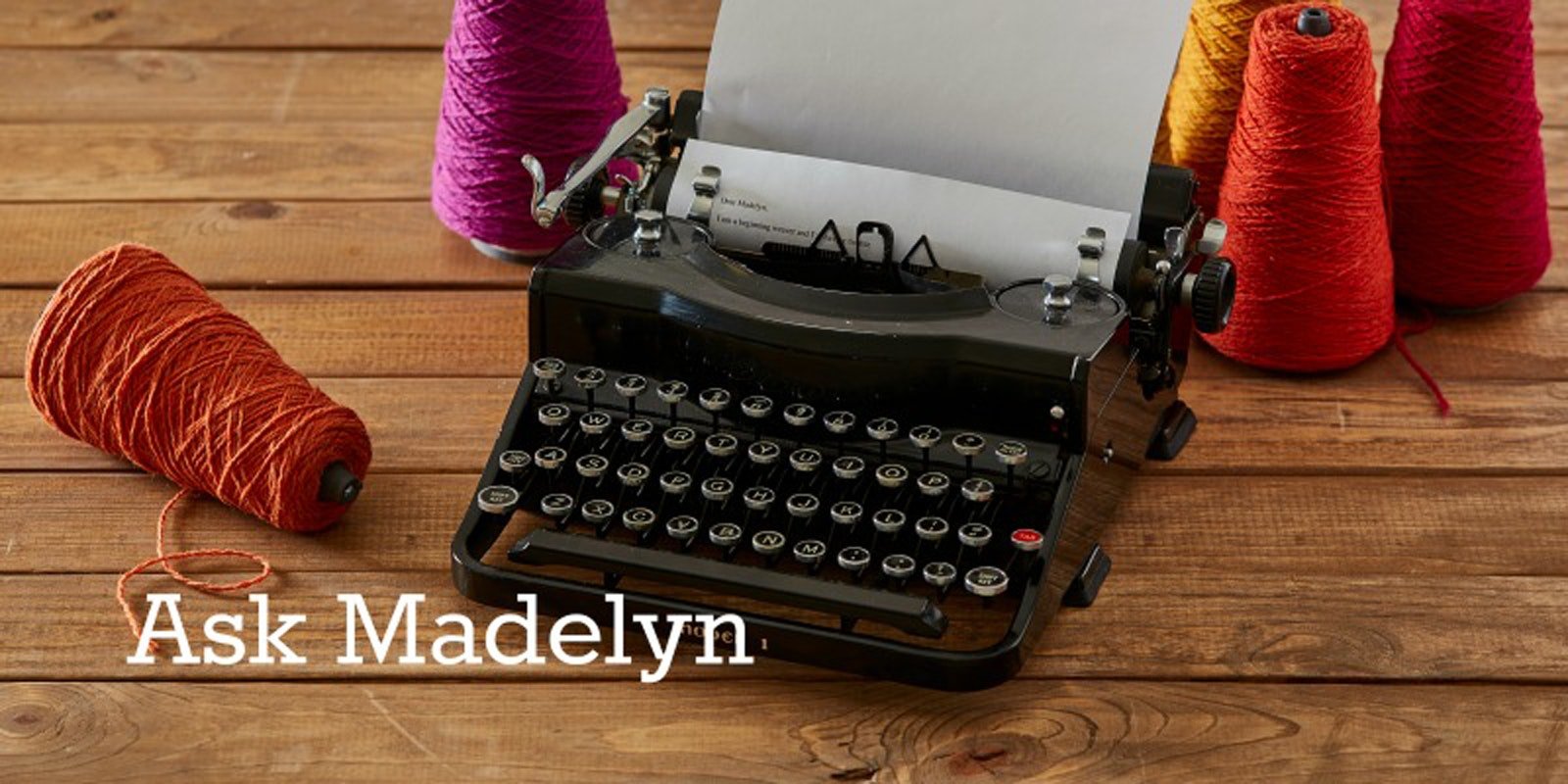Hi Madelyn!
What is the best way of calculating the yardage for weft yarns used in a woven project in overshot? Is there some kind of formula to apply that would give an accurate estimate?
For measuring the number of picks per inch, for example, the tabby-weft and the pattern-weft yarns are different sizes but the number of picks of each are the same. Lately, I have been using 14/2 alpaca/silk (3,500 yd/lb) for warp and tabby weft, and alpaca (1,500 yd/lb) for pattern weft. I calculated what I thought was the right amount for each yarn, but in the end used up more tabby yarn than pattern-weft yarn. The warp sett was 20 epi and the width in the reed was 25". My weft sett was 20 ppi (10 pattern, 10 tabby). The dimensions measured on the loom were 23" x 70". I calculated I would need about 500 yd of each yarn for the weft.
–Liz
Hi Liz!
I think you probably used pretty close to the right method to determine your weft yarn amounts (based on the yards you indicate in your estimate): Multiply the number of picks per inch times the width of the warp in the reed times the woven length, and then, since that number will be in inches, divide by 36 to get the total number of yards. In addition to that, though, an allowance must be made for weft take-up, since the weft does not make a straight path across the width of the warp, but must be angled or arced.
In your case: Multiply ten picks per inch (of each yarn) times the number of woven inches (70) times the warp width (25) and add an allowance for weft take-up (which is the only factor for which there can be some variation): 70" x 10 x 25" divided by 36 inches per yd equals 486 yd. I usually add about 15% for weft take-up. That would mean 486 plus 73, or 559 yd. (15% is adding too much, by the way; 10% is the usual percentage, but I always want to allow more than I will really need—this will also make me not worry if I have to cut out weft for mistakes, etc.)
But this doesn’t answer your question about why the lengths were different between your two yarns, when you made the same number of picks per inch of each. In theory, weft take-up is greater if the weft interlaces more with the warp. That would mean that weft take-up for the tabby weft is greater than for the pattern weft. I would also guess that a thicker weft takes up a bit more than a finer weft as it makes its path over and under warp threads, but this is only a guess. I wonder if you wove headers in plain weave alone before and after you used the pattern weft? At any rate, I’d have to watch you weave to see if you allowed less ease when you inserted the pattern weft than you did with the tabby weft.
I do want to point out something about overshot, however. Overshot is a structure with a supplementary pattern weft on a ground cloth of plain weave. Usually, if you were to cut out all the pattern wefts from an overshot cloth, you would end up with a plain-weave cloth. That cloth should look like a balanced plain weave, so in theory, in that cloth there would be as many tabby picks per inch as warp threads per inch. Most overshot drafts are therefore designed so that the motifs would be square with the TOTAL number of picks per inch (tabby and pattern) double the number of warp threads per inch (that would mean 40 total pip for your cloth rather than 20). Most of us can’t beat the two wefts in firmly enough to do that, so we remove a pattern pick or two from the large blocks of the motifs, just enough to make the motifs square. If you were to cut out the pattern weft from your cloth, you would have a plain weave in which the warp is twice as dense as the weft. You might want to open the warp sett a bit (15 or 18 epi?) to allow the pattern and tabby wefts to beat in more firmly. I’ll talk more about this in the next Ask Madelyn.
--Madelyn
P. S. In response to my answer about warping sticks vs paper in Ask Madelyn, March 27, 2015, several readers wrote to tout the use of mini blinds as warping sticks. Since they have a slight curve, they can hug the warp beam nicely. My only warning about them is that they are flexible and can bend. This is not a problem if the warp is beamed under even and firm tension at the same width on the warp beam as in the reed. But they can bend toward the warp beam if the warp spreads out at the edges and then is less dense there (or if warp width is much narrower than the length of the mini blinds.

